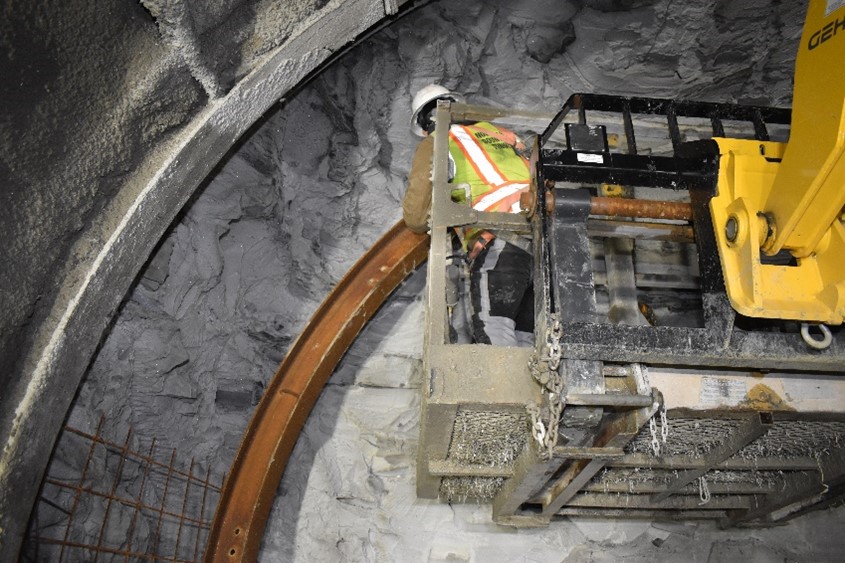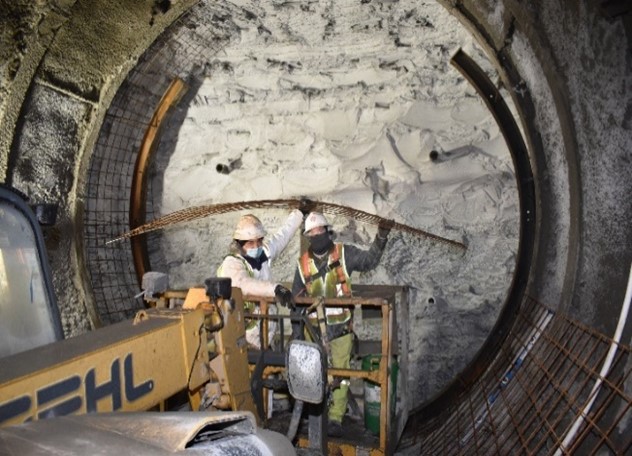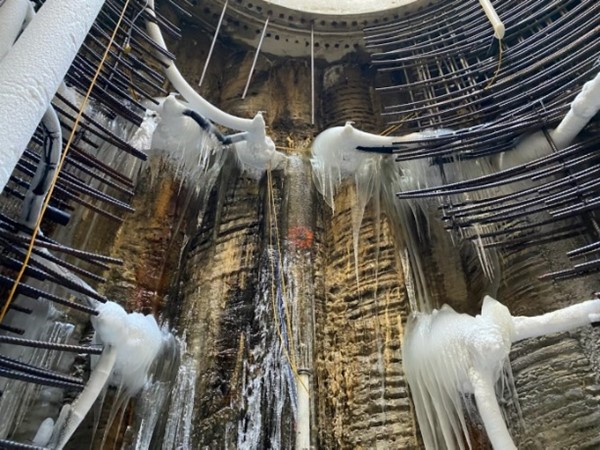
Project Summary/Scope:
As part of D.C. Water’s long-term control plan for flooding and Combined Sewer Overflows (CSO), the Northeast Boundary Tunnel (NEBT) was proposed to aid in storing and conveying combined sewer and storm water runoff to the Blue Plains Advanced Wastewater Treatment Plant. The (NEBT) was selected for its ability to significantly reduce (CSO) with minimal impact on urban life. This underground tunneling approach offers a high-capacity, long-term solution that effectively manages stormwater and sewage, protects the environment by treating runoff before it enters water bodies, and reduces surface disruption in densely populated areas. It represents a strategic response to the challenges of urban water management and environmental protection. This boundary tunnel is one of five tunnel projects D.C. Water, collectively spanning more than 12 miles in length.
An adit connection was required between the Florida Avenue Shaft and the Northeast Boundary Tunnel. A jet grout block was installed as an adit bulkhead prior to the mining of the tunnel with the tunnel boring machine.
Ground freezing was crucial due to complex urban soil types and fluctuating groundwater levels. This technique transformed unstable soil into a solid mass, improving stability for excavation and preventing groundwater from flooding the site. It mitigated risks like structural collapses and enabled safer, more efficient construction in challenging urban ground conditions.
A series of 28 horizontal freeze pipes were drilled and installed from the temporary secant pile lining the shaft and terminated in the jet grout mass. The length of the pipes was approximately 66 feet. The project specifications required that the adit be frozen across the entire face of the excavation.
Freezing was accomplished with an electrically powered mobile refrigeration plant that produced -32 oC calcium chloride brine. Initial freeze formation took approximately 6 weeks. At that time , the internal freeze pipes were terminated as the pipes around the excavation maintained the frozen face.
A brief summary of how well the ground freezing worked would be good.
As the excavation through the frozen soil progressed, a temporary shotcrete liner was installed. After reaching the jet grout bulkhead, the mining and connection to the tunnel was completed through the jet grouted soil.
After completion of the final adit structure, the freeze was terminated and thawed naturally.
Complementary Technologies Used: Jet Grouting
Alternate Technologies: Jet Grouting


Performance Monitoring: Ground temperature, groundwater elevations and freezing plant operating data were continuously monitored.
Cost Information: Cost information is confidential and not available
Case History Author/Submitter: Joseph A. Sopko, Ph.D., P.E.
Project Technical Paper: Ground Freezing & Jet Grouting. A Hybrid Solution for Tunneling in Urban Environments. Giurgola, B. 2022. World Tunnel Congress, Copenhagen
Date Case History Prepared: October 2022
